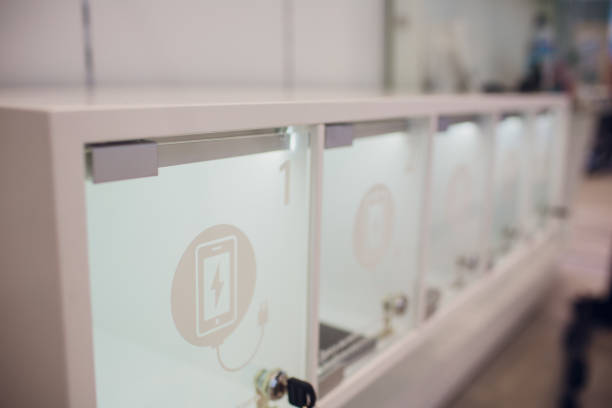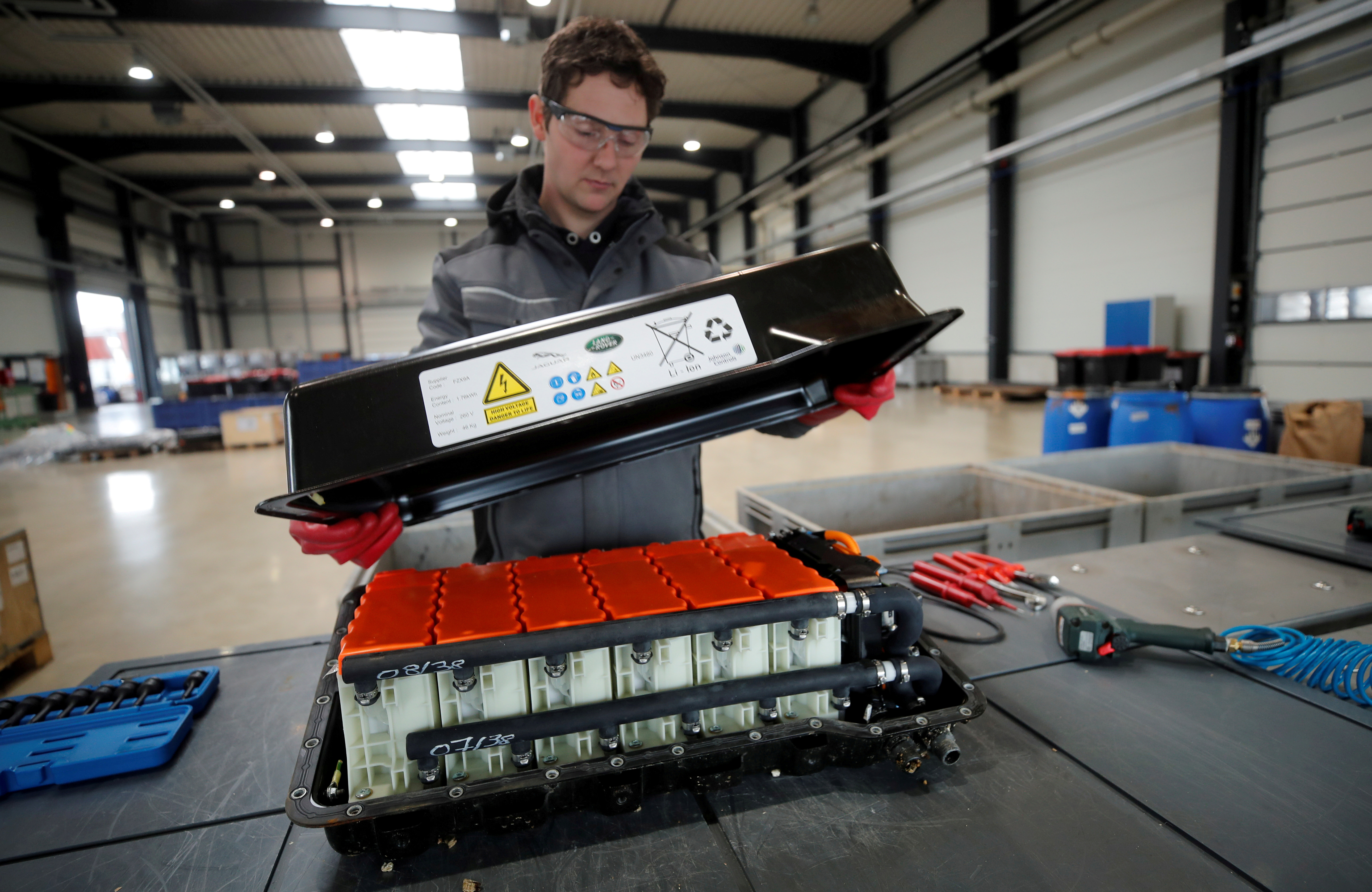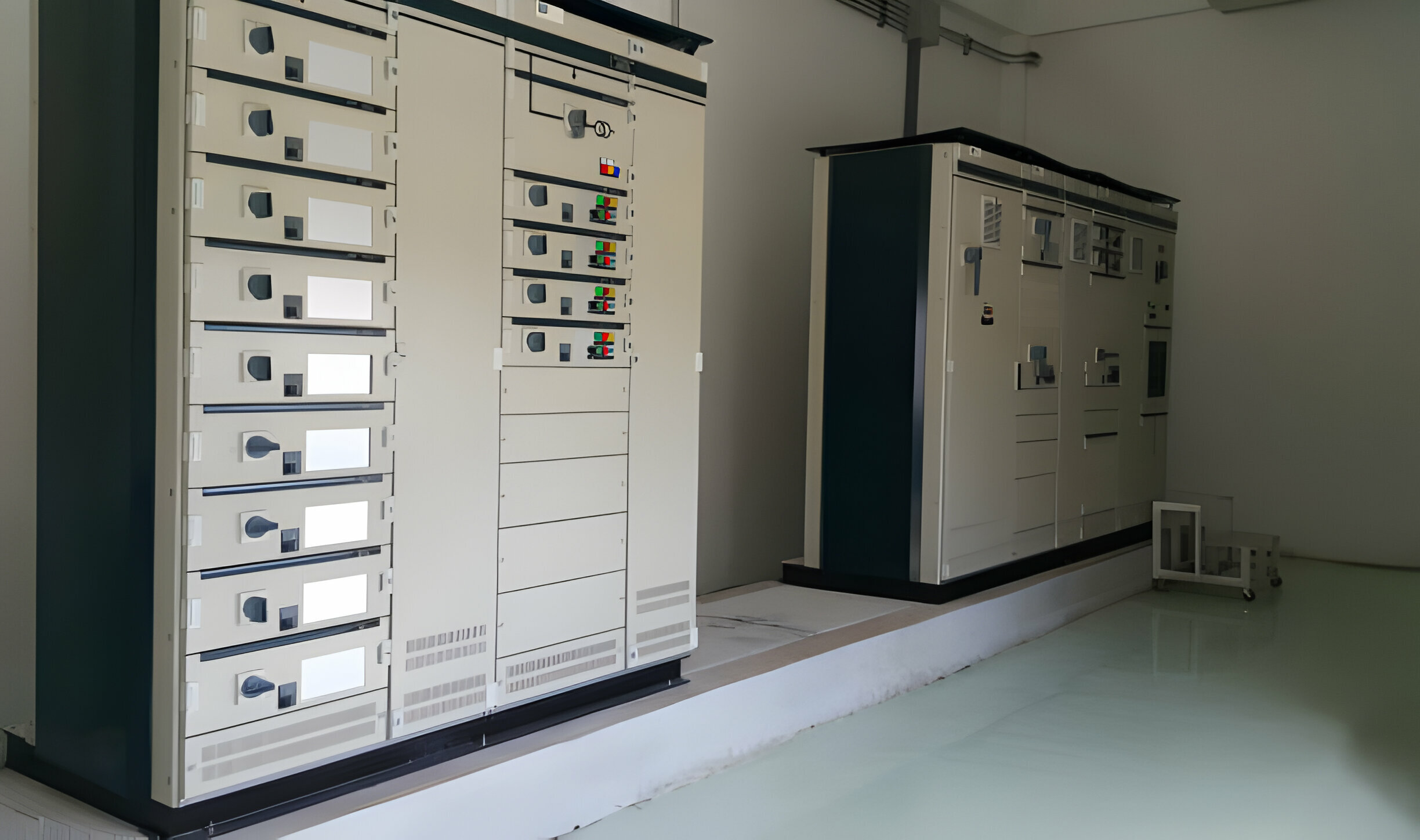Storing lithium batteries in the house is generally safe, but precautions should be taken to avoid potential risks. It is important to store lithium batteries in a cool, dry place away from direct sunlight and extreme temperatures to prevent overheating or explosion.
Also, batteries should be stored securely, away from flammable materials and out of reach of children or pets. Proper storage and handling of lithium batteries can help minimize the risk of accidents and ensure the safety of your household.
Be mindful of best practices for lithium battery storage to prevent potential hazards and maintain a safe living environment.
2. The Basics Of Lithium Batteries
Lithium batteries have gained popularity due to their high energy density and long lifespan. However, properly storing and handling these batteries is essential to ensure safety.
Understanding the basics of lithium batteries, including their composition, working mechanism, and common uses, can help individuals make informed decisions about storing them in their homes.
2.1 What Are Lithium Batteries?
Lithium batteries are rechargeable batteries that use lithium ions as the key component of their electrochemistry. The lithium ions move from the negative electrode to the positive electrode during discharge and vice versa during charging. These batteries are known for their lightweight and high energy density, making them ideal for various applications.
2.2 How Lithium Batteries Work
Lithium batteries operate based on the movement of lithium ions between the anode and the cathode. When the battery discharges, the lithium ions move from the anode to the cathode, producing electrical energy. The process is reversed during charging, allowing the lithium ions to return to the anode. This cycle enables the battery to store and release energy efficiently.
2.3 Common Uses Of Lithium Batteries
Lithium batteries are commonly used in portable electronics such as smartphones, laptops, and digital cameras due to their high energy density and lightweight nature.
They are also utilized in medical devices, electric vehicles, and energy storage systems. Their versatility and reliability have led to widespread adoption across various industries.

3. Potential Risks Of Storing Lithium Batteries
Lithium batteries are commonly used in various electronic devices, from smartphones to laptops. While they are a convenient and portable power source, knowing the potential risks of storing lithium batteries in the house is essential. This section will explore the potential risks and hazards of storing lithium batteries, including fire hazards, chemical leakage, thermal runaway, and damage propagation.
3.1 Fire Hazards
Lithium batteries risk catching fire if not stored and handled correctly. When exposed to extreme heat or physical damage, lithium batteries can experience thermal runaway, causing them to overheat and potentially ignite. It’s essential to store lithium batteries in a cool, dry place to minimize the risk of fire hazards.
3.2 Chemical Leakage
Another potential risk of storing lithium batteries is the possibility of chemical leakage. If a lithium battery is damaged or compromised, it may leak toxic chemicals, harming humans and the environment. Proper storage and handling can help mitigate the risk of chemical leakage.
3.3 Thermal Runaway
Thermal runaway occurs when a lithium battery overheats and enters a self-reinforcing cycle, leading to increased temperatures and potential ignition. This phenomenon can occur due to overcharging, physical damage, or exposure to high temperatures. Storing lithium batteries in a safe and temperature-controlled environment can help prevent thermal runaway.
3.4 Propagation Of Damage
When a lithium battery experiences damage, there is a risk of propagation of the damage to other nearby batteries or electronic devices. This can lead to a chain reaction of failures and hazards. Careful storage and handling and regular inspection of lithium batteries can help prevent damage propagation.
4. Safe Storage Practices For Lithium Batteries
Proper storage of lithium batteries is crucial to ensure their safety and longevity. These safe storage practices can minimize the risk of accidents or damage caused by lithium batteries.
4.1 Choosing The Right Storage Container
When storing lithium batteries, choosing a suitable storage container is essential. The container should contain non-conductive materials such as plastic or glass to prevent accidental short-circuiting.
Ensure the container is sturdy enough to protect the batteries from external damage and has a secure lid to keep out moisture and dust.
4.2 Proper Temperature And Humidity Conditions
Temperature and humidity can significantly affect the performance and lifespan of lithium batteries. Store the batteries in a cool and dry place to maintain optimal conditions. Avoid exposing them to extreme temperatures, both high and low.
Excessive heat can lead to thermal runaway, while cold temperatures can reduce the battery’s capacity. Also, high humidity can cause corrosion and damage the batteries, so keeping the storage area dry is essential.
4.3 Ensuring Proper Ventilation
It is essential to provide proper ventilation in the storage area when storing lithium batteries. Lithium batteries can release hazardous gases, and an accumulation of these gases can pose a safety risk. Ensure the storage area is well-ventilated, allowing any gases to disperse adequately. Avoid storing batteries in airtight containers or confined spaces to prevent gas build-up.
4.4 Storage Considerations For Different Types Of Lithium Batteries
Different types of lithium batteries may have specific storage requirements. Here are some important considerations:
- Lithium-ion (Li-ion) batteries: Store Li-ion batteries at a partial charge, preferably around 40% to 60% of their maximum capacity. Avoid fully discharging or overcharging them, as it can harm the battery’s lifespan.
- Lithium polymer (LiPo) batteries: LiPo batteries are sensitive to temperature and should be stored at room temperature. Additionally, storing them away from flammable materials is crucial due to their potential risk of catching fire.
- Lithium metal batteries: These batteries are highly reactive and must be stored in a non-flammable container with proper insulation. Protecting them from physical damage and keeping them away from moisture is vital.
By understanding the storage considerations for different lithium battery types, you can ensure their safety and optimize their performance.

Credit: www.reuters.com
How to store lithium-ion batteries when not in use
Storing lithium-ion batteries properly when not in use is essential for maintaining their performance and longevity. Here are some guidelines to follow:
- Charge Level: Ideally, store lithium-ion batteries at around 40-60% of their maximum charge. This range is considered optimal for long-term storage. The battery may degrade faster if it is fully charged or nearly empty.
- Cool and Dry Environment: Store batteries in a cool, dry place. Avoid exposing them to extreme temperatures, both hot and cold. High temperatures can accelerate the degradation process, while cold temperatures can increase internal resistance, affecting performance.
- Avoid Full Discharge: Lithium-ion batteries do not have a “memory effect,” so there’s no need to discharge them before whole storage. Allowing a lithium-ion battery to discharge before storage fully can lead to a deeper discharge state, which may harm the battery.
- Use the Right Container: If you remove the battery from a device, store it in a non-conductive, cool container. Avoid metal containers or wrapping the battery in materials that conduct electricity, which could lead to a short circuit.
- Check Charge Level Periodically: If you plan to store the battery for an extended period, check its charge level periodically (every few months) and recharge it if it has dropped significantly. This helps prevent the battery from reaching deficient charge levels.
- Avoid Heat Sources: Keep the batteries away from direct sunlight, heaters, radiators, and other heat sources. Heat can accelerate the chemical reactions inside the battery, reducing its lifespan.
- Store Separately: If storing multiple lithium-ion batteries, store them separately to prevent potential short circuits. Placing them in individual plastic bags or using dedicated compartments can help.
- Use Manufacturer Recommendations: Follow any specific storage recommendations the battery manufacturer provides. Different types of lithium-ion batteries may have slightly different storage requirements.
Remember that the overall goal is to keep the battery stable, avoiding extreme charge levels and temperatures. By following these guidelines, you can help ensure that the lithium-ion battery remains in good condition during periods of non-use.
lithium-ion battery storage containers
When storing lithium-ion batteries, it’s important to use appropriate containers to ensure safety and prevent potential issues, such as short circuits. Here are some suggestions for lithium-ion battery storage containers:
- Plastic Battery Cases: Many manufacturers produce plastic cases for storing individual lithium-ion batteries. These cases are usually made of non-conductive materials and have compartments to hold each battery securely. They help prevent accidental contact with metal objects that could cause a short circuit.
- Battery Holder/Storage Organizers: Battery holders or organizers are available in various shapes and sizes. They are designed to store multiple batteries in a structured and secure manner. Look for ones made of non-conductive materials.
- Silicone Battery Sleeves: Silicone sleeves or covers are flexible and can cover individual batteries. They provide a protective layer and help prevent any accidental short circuits. Ensure that the silicone material is non-conductive.
- Small Plastic Containers: You can use small containers with individual compartments for bulk storage. Ensure the compartments are well-insulated and prevent batteries from coming into contact with each other.
- Original Packaging: If you still have the original packaging for the lithium-ion batteries, it’s a good idea to store them in those packages. The original packaging is designed to protect the batteries during shipping and storage.
- Battery Bags/Pouches: Some manufacturers produce fire-resistant and puncture-resistant battery bags or pouches. These bags are designed to contain any potential fire or explosion within the bag, providing an extra layer of safety. However, remember that such bags are not a substitute for safe storage practices and are typically recommended for transportation rather than long-term storage.
When choosing or repurposing containers for lithium-ion battery storage, the key is to ensure that the material is non-conductive and that the batteries are securely separated to prevent short circuits.
Additionally, always follow the manufacturer’s recommendations for storage and safety precautions. If you’re uncertain about the appropriate storage solution, consider contacting the battery manufacturer for specific guidance.

Storage of lithium-ion batteries in warehouse
Storing lithium-ion batteries in a warehouse requires careful consideration of safety measures to prevent hazards such as short circuits, overheating, and fires. Here are some guidelines for the storage of lithium-ion batteries in a warehouse:
- Temperature Control: Maintain a stable and moderate temperature in the warehouse. Avoid exposing lithium-ion batteries to extreme temperatures, as high temperatures can accelerate the degradation of the batteries and increase the risk of thermal runaway.
- Ventilation: Ensure proper ventilation in the warehouse to disperse any gases emitted by damaged or faulty batteries. Adequate ventilation helps minimize the risk of gas build-up, reducing the potential for fire or explosion.
- Separation: Store lithium-ion batteries in a way that prevents direct contact with each other and conductive materials. Individual storage containers, such as plastic bins or trays, can help prevent accidental short circuits.
- Avoid Mixing: Do not mix different types, sizes, or chemistries of lithium-ion batteries during storage. This helps prevent compatibility issues and reduces the risk of thermal events.
- Fire Safety Equipment: Install fire safety equipment, including fire extinguishers, within the warehouse. Ensure that employees are trained in adequately using fire extinguishers and that the equipment is regularly inspected and maintained.
- Emergency Response Plan: Develop and implement an emergency response plan that includes procedures for dealing with battery-related incidents. This plan should be communicated to all warehouse personnel, and drills should be conducted periodically.
- Storage Racks and Shelving: Use appropriate storage racks and shelving designed to prevent accidental battery damage. Avoid overstacking, and ensure that batteries are stored securely to prevent falls or physical damage.
- Labelling: Clearly label storage areas for lithium-ion batteries, indicating any specific requirements or precautions. This helps raise awareness among warehouse staff and emergency responders.
- Regular Inspection: Inspect stored batteries to identify and promptly remove damaged or defective units. Damaged batteries can pose a higher risk of thermal events.
- Compliance with Regulations: Ensure compliance with local regulations and safety standards for storing lithium-ion batteries. Familiarize yourself with any specific requirements or guidelines provided by relevant authorities.
- Security Measures: Implement security measures to prevent unauthorized access to battery storage areas. This helps minimize the risk of intentional tampering or theft.
Always follow the guidelines provided by the battery manufacturer regarding storage conditions and safety precautions. If there are any uncertainties or if you have specific concerns, consult with safety professionals or relevant authorities to ensure that your warehouse complies with best practices for lithium-ion battery storage.
Frequently Asked Questions Of Is It Safe To Store Lithium Batteries In The House
Is It Safe To Store Lithium Batteries In The House?
Storing lithium batteries in the house is generally safe if certain precautions are taken. Ensure they are stored in a cool, dry place, away from flammable materials. Avoid storing damaged or old batteries, as they pose a greater risk.
Keeping them in a container or plastic bag is also recommended to prevent short circuits.
Where is the safest place to store lithium batteries?
Store lithium batteries in a cool, dry place away from direct sunlight and extreme temperatures. Avoid exposing them to heat or moisture, and store them in a fireproof container if possible.
What are the rules for storage of lithium-ion batteries?
Store lithium-ion batteries in a cool, dry place, away from direct sunlight and extreme temperatures. Avoid fully charging or discharging them before storage, and use a storage charge of around 40-60%. Please keep them in a non-metallic, well-ventilated container and avoid exposing them to heat moisture, or physical damage.
What are the dangers of lithium battery storage facilities?
Dangers of lithium battery storage facilities include the risk of thermal runaway leading to fires or explosions, release of toxic fumes, and challenges in firefighting due to the need for specialized techniques and materials. Proper safety measures, such as fire suppression systems and ventilation, are crucial to mitigate these risks.
How long can you leave a lithium battery in storage?
For optimal performance and safety, storing lithium batteries for no more than six months at a partial charge (around 40-60%) is recommended. If storing for an extended period, periodically check and recharge them to maintain capacity and prevent over-discharge.
How do you store lithium batteries at home?
Store lithium batteries at home in a cool, dry place away from direct sunlight and extreme temperatures. Use a non-metallic container and avoid storing them fully charged or fully depleted. Aim for a long-term storage charge of around 40-60%.
Is it OK to store lithium batteries fully charged?
Storing lithium batteries fully charged for long periods is not ideal, as it can lead to capacity degradation. Aim for a charge level of around 40-60% for extended storage to optimize battery health.
Where is the safest place to store batteries?
The safest place to store batteries is in a cool, dry location, away from direct sunlight and extreme temperatures. A designated, non-metallic container or original packaging is recommended to prevent contact with other metal objects and reduce the risk of short circuits.
What is the safest way to store batteries?
The safest way to store batteries is in a cool, dry place, away from direct sunlight and extreme temperatures. Store them in their original packaging or use a non-metallic container to prevent contact with metal objects that could cause a short circuit. Avoid storing batteries fully charged for long periods to prevent capacity degradation.
Conclusion
While storing lithium batteries in the house is generally safe, precautions must be taken to minimize potential risks. These include keeping batteries away from flammable materials, storing them in cool and dry places, and avoiding exposure to extreme temperatures.
By following these guidelines, you can ensure the safe storage of lithium batteries and reduce the chances of accidents or damages. Remember always to prioritize safety when handling and storing batteries in your home.

I am a Mahdi . I have four two of experience in Technology and all types of Battery’s like Solar Battery, Car Battery, Lithium Battery etc. So I work on solving these issues and give various tips on these issues.
